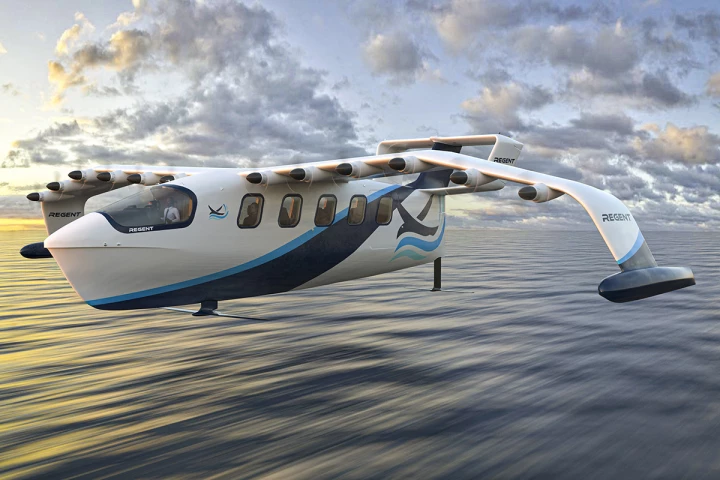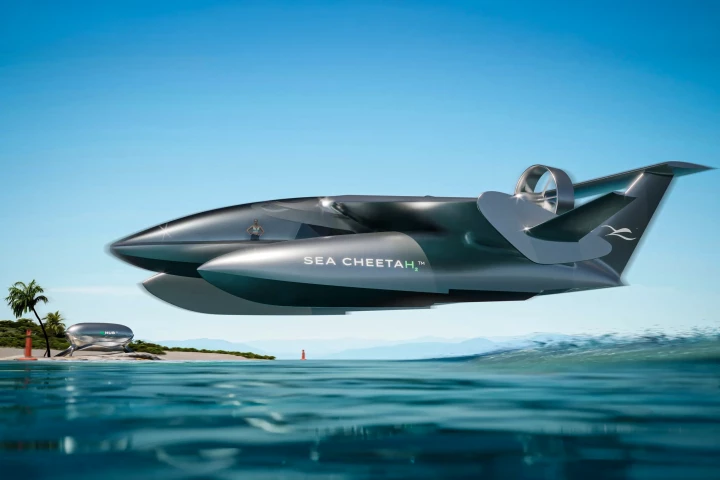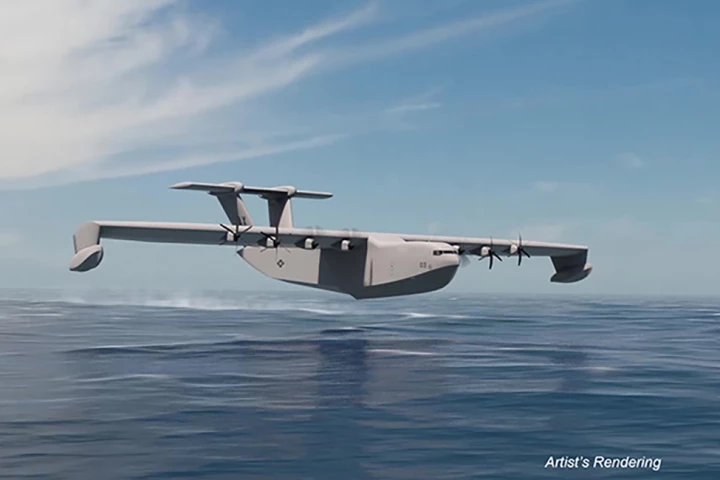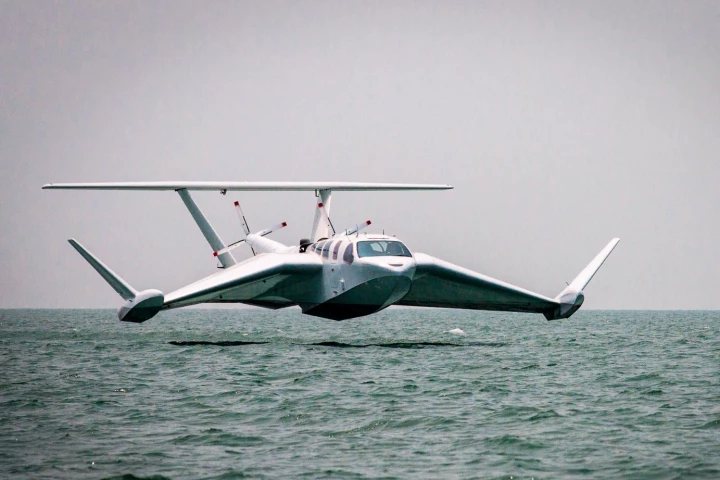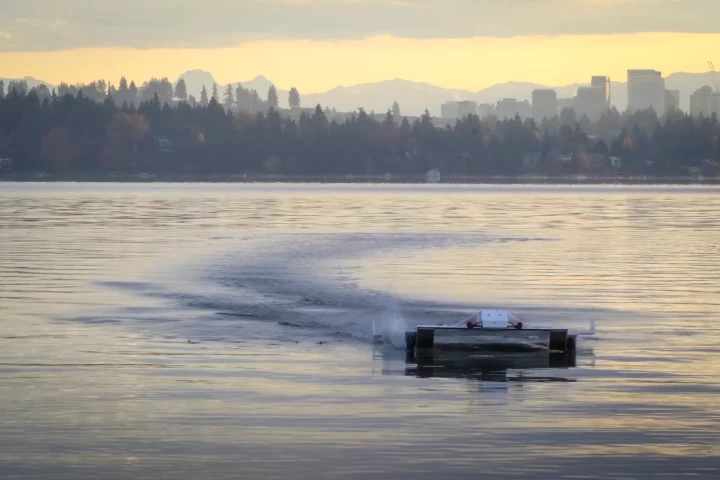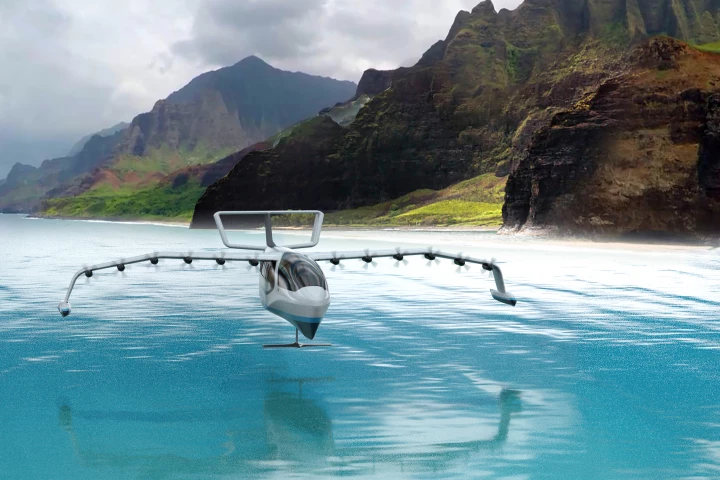Ground Effect Vehicle
-
Designed to provide the range, speed and convenience conventional e-aircraft and e-boats lack, the otherworldly Regent Viceroy Seaglider has completed a major milestone, demonstrating the hydrofoil capabilities that serve as one of its three modes.
-
Rhode Island-based startup Regent Craft has successfully completed the first test of its full-size electric Viceroy seaglider with passengers on board, validating the company's idea for an all-new kind of ocean-faring vessel.
-
Low-flying ground effect aircraft can deliver zero-emissions coastal transport that goes a lot further and a lot faster than electric boats – without needing FAA certification. So what happens when you add energy-dense hydrogen fuel to the equation?
-
Aurora Flight Sciences has released a new video of its revolutionary wing-in-ground-effect Liberty Lifter concept aircraft that it's developing for DARPA. The aircraft uses ground effect to lift heavy loads without the need for an airstrip or ship port.
-
A remarkably innovative clean passenger aircraft is set to begin full-scale testing this year. Regent's 12-seat Viceroy seaglider hydrofoils through the water, then takes off and rides the wing-in-ground effect for a huge efficiency boost.
-
Textron is developing a remarkable new Surface Effect amphibious transport for the US Navy and Marines. It can carry 50 tonnes of cargo, skims the waves at 50+ knots (57+ mph, 92+ km/h), and operates in water just four feet (1.2 m) deep.
-
Hovering uncannily close to the waves, the Airfish-8 carves its way over water three times quicker than a boat, and 2.3 times more efficiently than an aircraft. Singapore's ST Engineering has announced its first orders, set to enter service in 2025.
-
Things can get ugly and inefficient when a ground effect vehicle accidentally skims the water, adding significant drag that can drastically slow it down, wrench it sideways or just cost energy. One inventor is solving this problem with paddle wheels.
-
The remarkable Seaglider promises a clean revolution in coastal transport; the convenience of an electric boat meets the speed and comfort of an aircraft, at unparalleled efficiency and range thanks to hydrofoils and the wing-in-ground effect.
-
Regent has released video of its remarkable Seaglider prototype in flight testing. The first machine to combine the efficiency advantages of ground effect and hydrofoiling in a single design, it promises revolutionary speed and range in coastal areas.
-
DARPA has launched a new "Liberty Lifter" program to design, build and test a highly-efficient wing-in-ground effect aircraft for transporting "very large, heavy loads" over long distances without runways. Prototypes could fly as early as 2027.
-
Boston-based company Regent has taken US$465 million in pre-orders for its super-fast electric "Seaglider." Using the wing-in-ground effect, this 180-mph beast promises twice the range of an electric aircraft, and a revolution in coastal transport.
Load More

